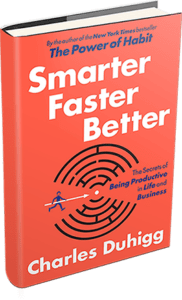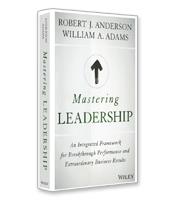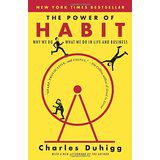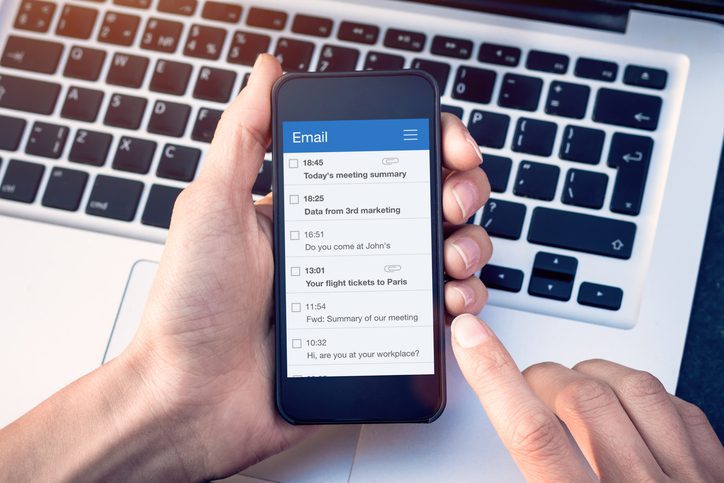“Smarter, Faster, Better” by Charles Duhigg
 Duhigg’s earlier book, The Power of Habit, was so insightful and intriguing that I decided to pick up his latest best seller: Smarter, Faster, and Better. This is a great read with memorable stories and case studies that will help with the stickiness of his teaching. Great read!
Duhigg’s earlier book, The Power of Habit, was so insightful and intriguing that I decided to pick up his latest best seller: Smarter, Faster, and Better. This is a great read with memorable stories and case studies that will help with the stickiness of his teaching. Great read!
The Power (of the) Nap
People have long searched for the remedy to the afternoon exhaustion that sets in, leaving them tired and unproductive. Employees often sip coffee or pound energy drinks in an attempt to stifle their grogginess. But research indicates the best thing you can do to improve your alertness, mood, and productivity, is simply take a power nap. Power naps have proven to be extremely effective in combating the effects of sleep deprivation and boosting productivity during the mid-day lull. In a research study conducted by the NASA sleep researchers, a short power nap of just 26 minutes boosted the performance of their pilots by an impressive 34%.
The act of napping shouldn’t be viewed as laziness or lethargy, but rather an essential part of the day. Winston Churchill was a major fan of naps, saying, “You must sleep sometime between lunch and dinner… Don’t think you will be doing less work because you sleep during the day.”
In the corporate world, a power nap may be a hard thing to implement. Companies like Google have established extravagant places for their employees to nap, referred to as the Energy Pods. But for those who aren’t lucky enough to enjoy the exuberant benefits provided by companies like Google, we may have to adjust our thinking on the implementation of napping into the work place. Based on the statistics, napping will increase employee productivity. For managers, power napping should be something that is encouraged. The best investment you make in your business might just be a comfortable place for employees to slip away for a quick nap. For employees working in an environment where napping is taboo, look for a quiet place during your lunch hours. At the very least, try napping when you get home. It could seriously improve your mood during the evenings, and increase performance for any leftover work you have.
Here are some quick tips to get the most out of your power naps:
- Go dark and quiet. The body is most able to fall asleep in this setting. If this means goofy earplugs and an eye mask, so be it.
- Keep it short. A power nap should only last between 20 and 30 minutes. Napping for too long can actually increase grogginess.
- Be consistent. Try to shoot for napping at the same time each day so your body gets accustomed to napping and you will fall asleep faster.
So the next time you go to pour your fourth cup of coffee in an attempt to push through the afternoon, remember the power of napping. It will boost productivity, performance, mood, and alertness, and leave you feeling ready to take on the rest of your day.
“Mastering Leadership” by Robert J. Anderson and William A. Adams
 Mastering Leadership is one of the most comprehensive, and well-researched leadership books that I’ve read in years. Both Anderson and Adams do an amazing job of presenting their Universal Leadership Model, and then outlining leadership principles and practices that will increase a leaders’ effectiveness. I would highly recommend this book; however it’s not bedtime reading! It requires some focus thinking, highlighting, and notes in the margin.
Mastering Leadership is one of the most comprehensive, and well-researched leadership books that I’ve read in years. Both Anderson and Adams do an amazing job of presenting their Universal Leadership Model, and then outlining leadership principles and practices that will increase a leaders’ effectiveness. I would highly recommend this book; however it’s not bedtime reading! It requires some focus thinking, highlighting, and notes in the margin.
“Your Brain at Work” by David Rock
![9780061771293_p0_v1_s118x184[1]](https://starquestgroup.com/wp-content/uploads/2015/05/9780061771293_p0_v1_s118x1841.jpg) David Rock’s book had been recommended a couple of years ago, and so I had a chance to finally pull it off my bookshelf and delve into his work. David outlines some fascinating research, does an outstanding job of taking hard science and applying it to the workplace through great storytelling. If you’re interested in learning more about how the brain works, I’d recommend this book.
David Rock’s book had been recommended a couple of years ago, and so I had a chance to finally pull it off my bookshelf and delve into his work. David outlines some fascinating research, does an outstanding job of taking hard science and applying it to the workplace through great storytelling. If you’re interested in learning more about how the brain works, I’d recommend this book.
An often forgotten best practice: “Starting with Why”
As organizations finalize their new year strategic planning, many are now shifting toward communicating and socializing their strategic direction so that their constituents not only “get it”, but are engaged, energized and inspired to take action.
Having worked with many clients in the practice area of change management, we have learned that many organizations miss the compelling “WHY” component. In other words, organizations launch into what we’re going to do and what we’re going to achieve, but do not include as part of the communication process why we’re asking you to change, why it’s important to be engaged, why we need you as part of the process, etc.
I recently came across a great book that reminded me of the importance of the WHY. Start with Why, by Simon Sinek, argues that we all think, act, and communicate in the exact same way – and it’s the complete opposite of what we all do. He refers to this powerful concept as The Golden Circle – and it provides a framework for building organizations, executing initiatives, and inspiring people to take action.
Any organization can explain what they do and how they do it. However, few are able to articulate why they exist. It is not about profit targets (those are results), or how we’re going to achieve our goals (those are strategies). The WHY is about communicating why your organization exists, why you do the things you do, why customers buy your products, and why your employees are loyal and proud to be associated with your organization. It seems intuitive which perhaps is why it’s often overlooked!
Starting with WHY works in big business and small business, in the nonprofit world and in politics. Those who start with WHY never manipulate, they inspire. And the people who follow them do so because they want to, not because they have to.
Check out Sinek’s book. A great read over the holidays.
“Drive: The Surprising Trust About What Motivates Us” by Daniel Pink
![419tQKzU2jL._AC_US160_[1]](https://starquestgroup.com/wp-content/uploads/2013/10/419tQKzU2jL._AC_US160_1.jpg) This summer I had an opportunity to read a great book entitled, Drive: The Surprising Truth About What Motivates Us by Daniel Pink. Pink’s book explores and debunks several myths about what drives human behavior, and hebuilds a strong case for why we as leaders and managers need to better understand what motivates people and not just rely on economic motivators.
This summer I had an opportunity to read a great book entitled, Drive: The Surprising Truth About What Motivates Us by Daniel Pink. Pink’s book explores and debunks several myths about what drives human behavior, and hebuilds a strong case for why we as leaders and managers need to better understand what motivates people and not just rely on economic motivators.
For example one commonly held belief is that ifwe provide larger extrinsic incentives, then people will perform better. This belief turns out to be true for simple, mechanical tasks. However, itis not true when motivating people aroundcomplex tasks that demand more conceptual reasoning. His researchindicates thatperformance andoutcomes are largely driven byproviding people with autonomy, enabling them to be experts, and creating a sense of purpose. In other words, when thinking about motivating others we as leaders should ask ourselves 1)have we created an environment where people have autonomy; 2) are we enabling peopleto develop and master their skills; and 3)have we communicated a strong sense of purpose –or why we are doing what we’re doing.Pink’s findingsare simple, and powerful.
Learning to love your inbox
Take a look at your inbox right now. How many unread or unanswered emails are in there? If your answer leaves you feeling overwhelmed, you’re not alone. But, your inbox holds more importance than you may think.
Experts say that in the next year, we will spend 30 to 40% of our workday addressing emails, and that today’s business professional receives and/or sends about 115 emails each day. No doubt that’s a lot to keep up with.
Let’s do the math: If each email takes on average about two minutes to either create or respond to, that turns out to be 230 minutes a day, or about four hours.
What we’ve heard from our clients is they’re working in their inboxes early in the morning, during lunch, before dinner, and right before bed. Some have said emails are like coffee – they’re both addictive! (For the record, we find coffee much more satisfying!)
There is some hope to the inbox inefficiency madness. Before you let your inbox start to manage you, learn how you can manage it.
Strategies for email efficiency
1. Empty your inbox daily – This has actually been the most challenging for me to implement because I like having everything in one searchable box. I think I know where everything is, but do I really? The problem is that this method increases the likelihood for missing an email that is important. I’ve adopted the two-minute rule that was discussed in David Allen’s book ‘Getting Things Done: The Art of Stress-Free Productivity.’
Allen suggests that the first thing you do is evaluate whether the email is actionable or not actionable. If the email is actionable, determine whether you can do it in two minutes or less. If so, do it immediately. If the action can be delegated to someone who can do it better, delegate it. If you anticipate it will take more than two minutes, move it to a processed inbox and come back to your emails later when you have time to process them.
If the email is not actionable, delete it or put it into a reference folder or folders. Although not recommended, I do have multiple “reference” folders created that include admin, clients, projects, etc. It’s a matter of preference and what will work for you.
2. Less is more – Be intentional about sending less, and receiving less emails. In the book ‘The Hamster Revolution: How to Manage Your Email Before it Manages You,’ authors Tim Burress and Ken Blanchard talk about how to deliberately pause before pushing the ‘reply all’ button and ask if the email needs to be sent to everyone on the original distribution list.
We continue to see a proliferation of “reply all” emails going out, and the interesting thing is that Burress’ research says that almost 80% of people say that others send too many ‘reply all’ emails, but when asked if they send too many only 13% fessed up to overusing the ‘reply all’ button. People don’t like doing it, but don’t think they’re guilty.
If you’re trying to send less with the goal of receiving less emails, think about who you’re sending the email to before you push the ‘reply all’ button.
3. Quality over quantity – Ever get those emails that ramble on and it takes two minutes to identify the reason for the email? With emails, being concise is key. People have short attention spans, so get to the point in the first paragraph. Another suggestion is to use the subject line to effectively communicate the purpose of the email. Connecting the subject line closely with the content/purpose of the email will make it more searchable should you have to go back into your process inboxes and/or reference folders.
There are a lot of best practices out there to work smarter. If you have any email management ideas that have worked well for you, we’d like to hear from you!
“The Power of Habit” by Charles Duhigg
 In The Power of Habit, award-winning New York Times business reporter Charles Duhigg takes us to the thrilling edge of scientific discoveries that explain why habits exist and how they can be changed. With penetrating intelligence and an ability to distill vast amounts of information into engrossing narratives, Duhigg brings to life a whole new understanding of human nature and its potential for transformation.
In The Power of Habit, award-winning New York Times business reporter Charles Duhigg takes us to the thrilling edge of scientific discoveries that explain why habits exist and how they can be changed. With penetrating intelligence and an ability to distill vast amounts of information into engrossing narratives, Duhigg brings to life a whole new understanding of human nature and its potential for transformation.
The ROI of time: 3 ways to maximize it!
The other night I was watching my favorite reality show “Shark Tank” when Mark Cuban pondered whether or not to invest in a new entrepreneurial venture. When he finally responded “I’m out,” Mark clarified that he really didn’t know much about the product space and that his primary resource was his time, and he really didn’t see that his investment of money and time would realize a solid ROI.
I’ve thought about Mark’s comment multiple times this past week and have been more focused on assessing whether my time is getting a good ROI. Honestly, I was surprised at how many times I stopped and redirected my time and energy toward something that was adding value to StarQuest, our team, and my priorities.
It’s easy to get derailed on our time. Some would say that our culture is addicted to busyness, and it’s only getting worse. There are a lot of distractions in our daily lives (e.g., emails, meetings, problems), with plenty of opportunities to invest our time in places that really don’t generate a good ROI. Furthermore, what happens when we busy ourselves is we get tired, less focused and then are unable to be effective on the things that matter.
So here’s what I’ve learned to help me stay productive and maximize the ROI on my time:
1.) Be clear on where you add value. What are you good at and what are your strengths? Mark Cuban is very clear on where he adds value and he sticks to that rule. If you’re not adding value, then you may want to evaluate whether you’re the best person to get the job done and perhaps delegate.
2.) Be conscious of where your time is going. Raise the yellow flag when you find yourself doing things that you like, but do not necessarily add value to your company, your team and/or priorities. It’s easy to get sucked into “stuff” that really doesn’t maximize your value. Trust me, this is an area that I have to constantly monitor and assess.
3.) Clarify your priorities and plan daily. I recently heard of a study that said the majority of executives don’t get to their important tasks until the afternoon primirarly because they get derailed early in the day on the unimportant, urgent tasks. Keeping your priorities clear and planning daily will help you stay focused on the tasks that maximize your value and ROI.
Carl Sandberg once said, “Time is the coin of your life. It is the only coin you have, and only you can determine how it will be spent. Be careful lest you let other people spend it for you.”
What are some practices, disciplines, tools that you’ve used to maximize the ROI on your time? Also, what is the hardest thing about maximizing your team’s ROI on their time? Please share your comments with us.
Tough conversations: Just do it!
Your palms are sweaty; you’re rehearsing what you’re going to say over and over in your head. Yep: You’ve got a conversation in front of you that you need to get out of the way.
You’re probably avoiding the conversation or already tried, failed, and are reluctant to try again. It’s easier to stay quiet than bring up a possibly confrontational talk, isn’t it? And as much as we wish they would, they just don’t go away; they often grow, fester, or worse- lead to broken relationships, resentment, and in some cases as dramatic as human disasters.
By definition, a tough conversation is one where the situation affects all parties and involves high levels of emotion, high degrees of risk, and important outcomes for all those involved. Maybe in your case a tough conversation is with your teenager, or with your under-performing team at work. They come in all shapes and sizes.
Today we’re outlining three proven strategies to help you improve your communication skills, and that will equip you when it comes to having positive and productive tough conversations.
When you think about these conversations, it’s no wonder they are so often avoided! But, we all know that the risks of not having these types of conversations often outweigh the risks of having them. So, the question becomes: How can I better prepare myself to be successful?
Try these proven efforts before diving into that tough conversation:
1) Get yourself right – It’s important that before you conduct a tough conversation you get yourself right. This means learning ways to calm your emotions because we all know that when we’re emotional, we’re not able to reason and make good sound decisions. A couple strategies that I’ve found include going for a walk, or taking deep breaths. Another way to get yourself right is to be aware of your own beliefs and thoughts going through your mind. We all create our own “stories,” but whether they are reality-based or just head trash is something of which to be aware. It’s important that you get centered before launching into a tough conversation.
2) Check your motive -Motives define your desired outcomes, and are your reason behind your actions. For example, you have a team member who is not performing to your team’s expectations; you’re the team leader and you need to provide feedback and address the issue. If your motive to criticize and belittle your team member into submission, your conversation will progress differently than if your motive is to provide direct and honest feedback on a performance issue that is impacting the team. So, ask yourself: “What is my motive?”
3) Speak with intention – When you prepare for a tough conversation, make sure you know what you are going to say and how you are going to say it. What works great is to use “I” statements vs. “you” statements, and avoid placing blame, which will put the other person on the defense almost immediately. ‘You’ statements without the ‘I’ tend to elicit defensive responses, which are not what you want. Here is a quick example: “When you said [insert statement], I felt [insert feeling]”; or “I get frustrated when you [insert behavior].” You want to keep the communication lines open, not shut them down.
So here’s my question: Since “getting yourself right” is such an important strategy, what have you done to get yourself right? I’d love to hear from you!





